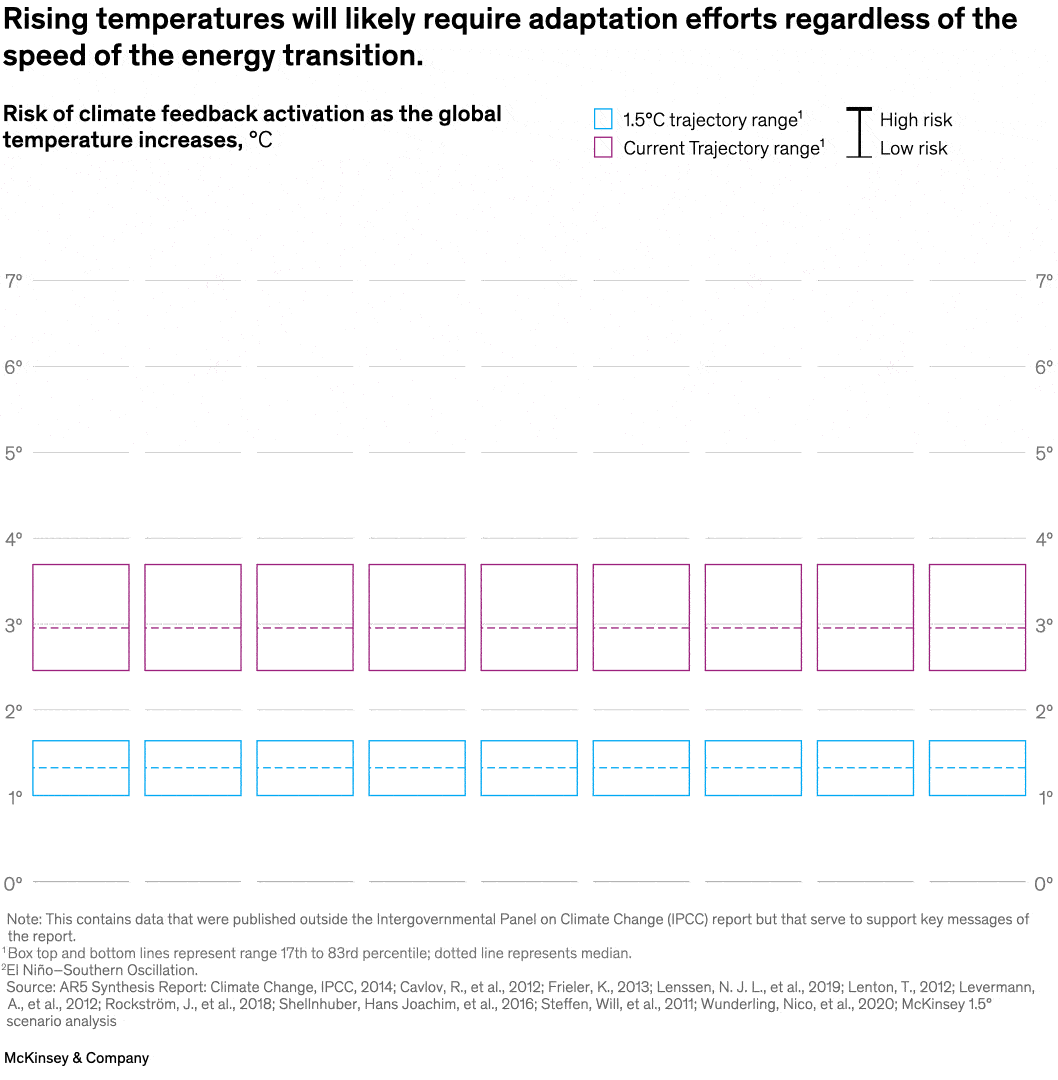While global CO2 emissions may decline after 2025, average warming is likely to exceed the 1.5°C threshold by 2035. As a result, unpredictable weather patterns could become more frequent and intense, senior partner Christer Tryggestad and colleagues note. This could activate climate feedback loops such as the collapse of the Greenland glacier. The onus may be on countries to encourage mitigation practices, which could help create jobs and economic value for communities while mitigating the risks of climate change.

Image description:
A range graph shows 2 climate scenarios across 9 risk events that could be triggered by rising temperatures. Scenario 1 assumes all climate solutions are implemented and global warming is limited to 1.5 degrees Celsius. Potential risk events triggered by this scenario, in order of likelihood, are:
- Arctic summer sea ice loss
- alpine glacier loss
- Greenland glacier collapse
- West Antarctic ice sheet collapse
- accelerated permafrost melt
Scenario 2 assumes nothing changes and the current trajectory toward ~3 degrees Celsius is maintained. Potential risk events triggered by this scenario, in order of likelihood, are:
- Amazon rainforest dieback
- boreal forest dieback
- thermohaline circulation collapse
- El Niño–Southern Oscillation cycle collapse
Note: This contains data that were published outside of the Intergovernmental Panel on Climate Change (IPCC) report but that serve to support the key messages of the report.
Source: AR5 Synthesis Report: Climate Change, IPCC, 2014; Cavlov, R., et al., 2012; Frieler, K., 2013; Lenssen, N. J. L., et al., 2019; Lenton, T., 2012; Levermann, A., et al., 2012; Rockström, J., et al., 2018; Shellnhuber, Hans Joachim, et al., 2016; Steffen, Will, et al., 2011; Wunderling, Nico, et al., 2020; McKinsey 1.5 degree Celsius scenario analysis.
End of image description.
To read the article, see “Global Energy Perspective 2023: CO2 emissions outlook,” January 24, 2024.